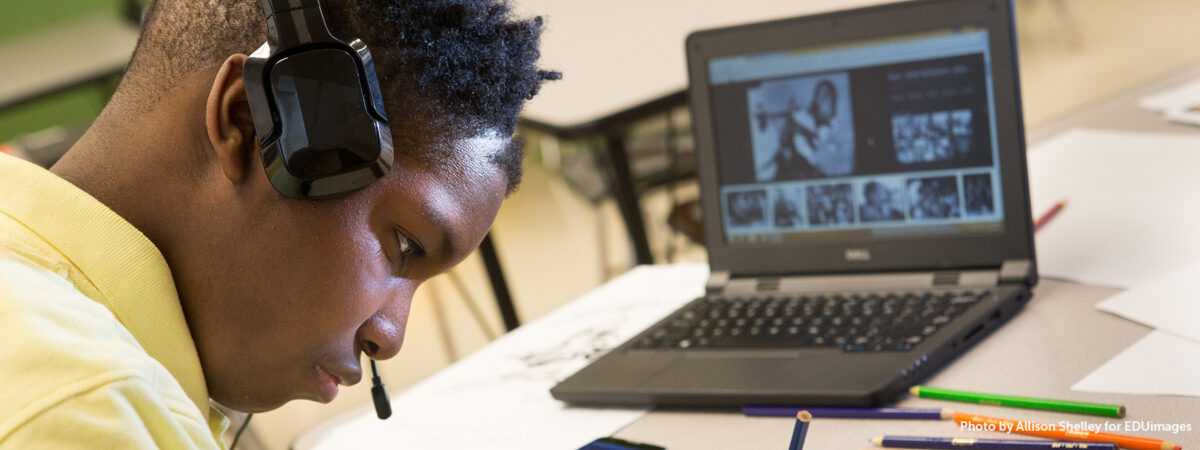
In this post, I’ll share some tips and strategies that I’ve found effective in creating an engaging and effective asynchronous class.
One of the key challenges of asynchronous learning is ensuring that students understand the course expectations. To help my students succeed in my asynchronous class, I provide clear and concise instructions for all assignments, assessments, and discussions. I also make sure that all instructions are easily accessible, and that my students know where to find them. To achieve this, I created a central repository for all course materials and resources on Canvas. Other course websites or learning management systems such as Blackboard or Schoology are also good options. Additionally, using Google Classroom to store my lessons and activities has been helpful because my students appreciate its streamlined view.
Incorporating multimedia content such as videos, podcasts, interactive simulations, quizzes, and other similar tools makes my asynchronous classes more engaging and interactive. Using multimedia to present information and reinforce concepts not only makes the material more interesting and memorable for students, but it also helps them stay engaged and motivated, even when they’re working independently.
Personally, I have found success in using three specific tools: Edpuzzle, Flipgrid, and GoFormative. Edpuzzle allows me to create interactive videos that keep students engaged and actively participating in the learning process. Flipgrid is a platform that allows students to create a video which they upload and share with their classmates. This way, students in my in-person class period have the opportunity to collaborate and connect with my asynchronous class. Meanwhile, GoFormative helps me create activities that provide students with instant feedback, allowing them to feel like they are in a traditional classroom setting even when working remotely. In fact, one of my students recently shared with me that they really enjoyed using GoFormative because it feels like they are interacting with me as their teacher in a classroom setting. It’s comments like this that reinforce the effectiveness of using engaging and interactive content to make asynchronous classes more enjoyable and meaningful for students.
Asynchronous classes can sometimes feel isolating for students, especially if they are working independently for long periods of time. To help mitigate this feeling of isolation, it’s important to encourage student-to-student interaction. For example, you could set up discussion forums where students can post questions, share ideas, and engage with one another. Alternatively, you might use videoconferencing or other virtual collaboration tools to facilitate real-time interactions between students.
Feedback is a critical component of any learning experience, especially in asynchronous classes. To ensure that my students are on track, it’s important that I provide regular feedback on their progress, both in terms of their understanding of the material and their performance on assignments and assessments. To accomplish this, I schedule weekly meetings with students during advisory time, or I make myself available through emails and other communication channels. By doing so, I can help ensure that my students are receiving the support they need to succeed in the course.
I use the Remind app to communicate with my students. One of my students mentioned that they enjoy getting instant feedback even if I’m not using my computer, and I appreciate that aspect as well. It’s great that students can upload pictures of their work, which allows me to give them more specific feedback. For more student-to-student interactions, I use the discussion post tool on Canvas to enable effective communication among them. However, since they enjoy working together face to face, they often use the library or visit my classroom during advisory time to collaborate with my in-person Calculus BC class.
Finally, it’s important to create a sense of community in an asynchronous class. To accomplish community, I establish clear expectations for participation and engagement and encourage students to get to know one another through discussion forums or other virtual collaboration tools. By doing so, students can feel more comfortable communicating with me and each other, which helps build a sense of trust and a safe learning environment. This approach has been successful in fostering a collaborative and engaging learning experience for my students, which ultimately leads to better outcomes for everyone involved.
Learn more about Verizon Innovative Learning Schools and how to bring the program to your school or district, and check out our Designing Synchronous and Asynchronous Instruction micro-credential.